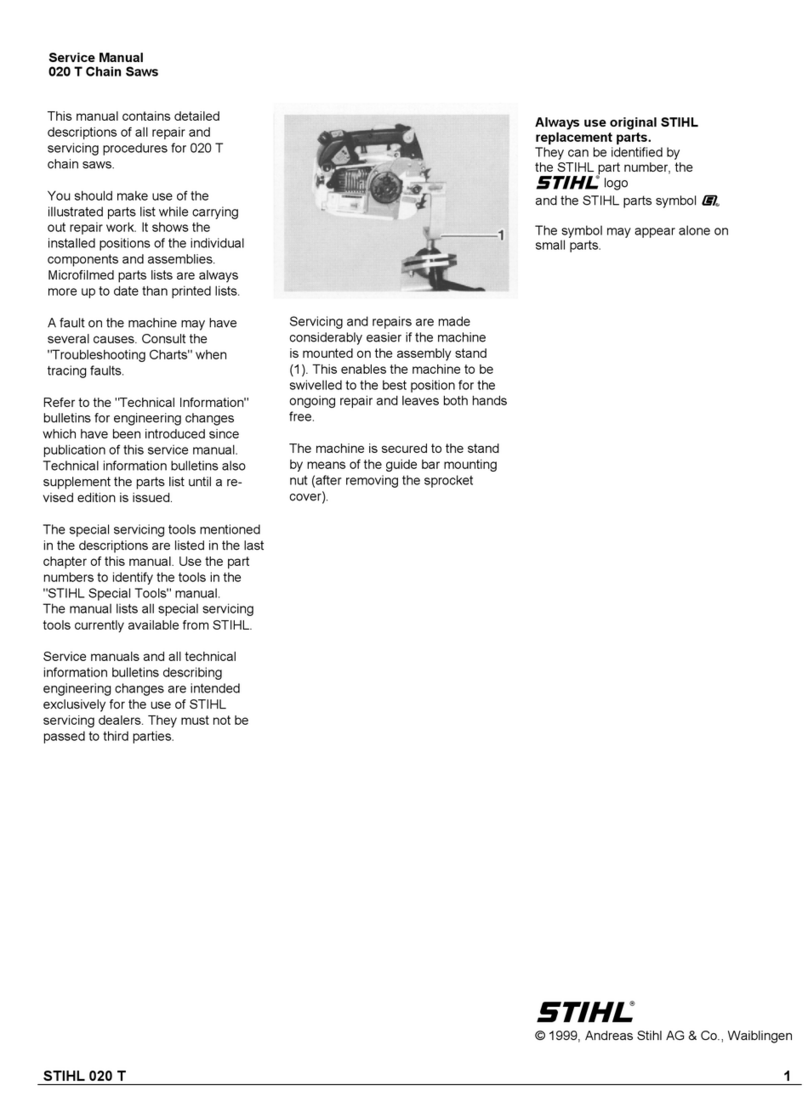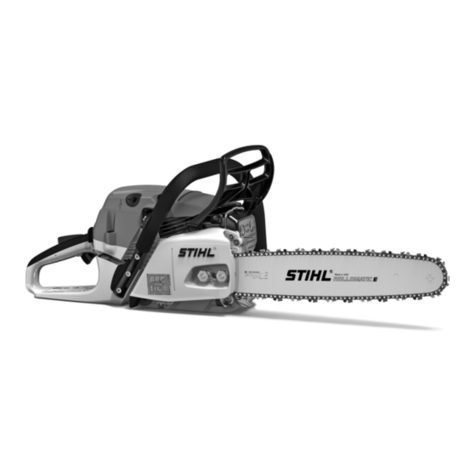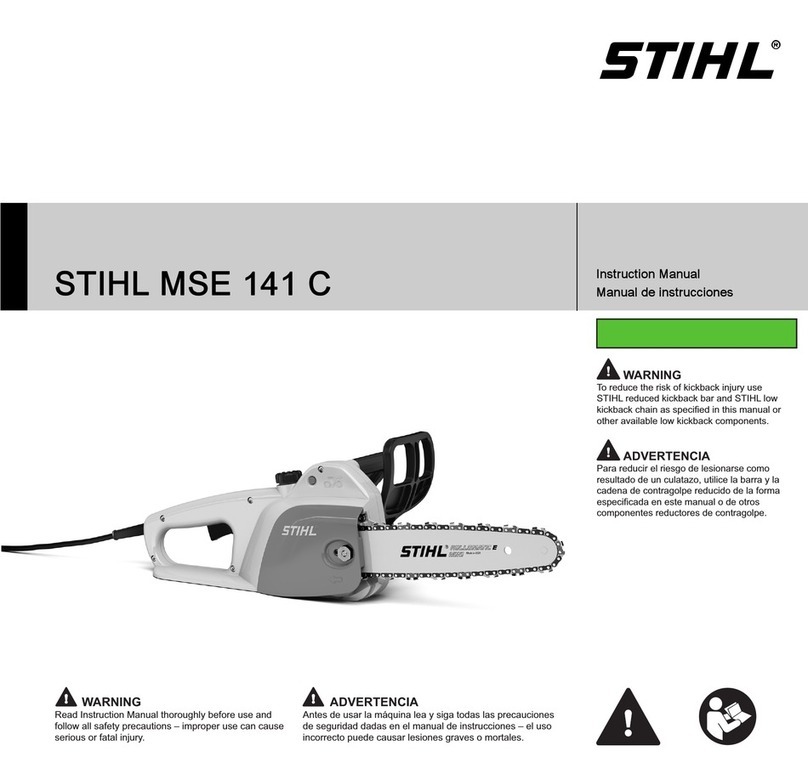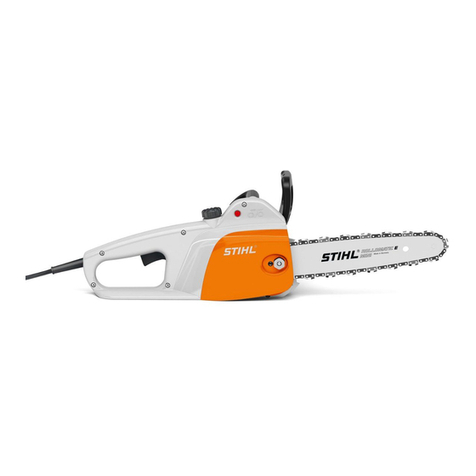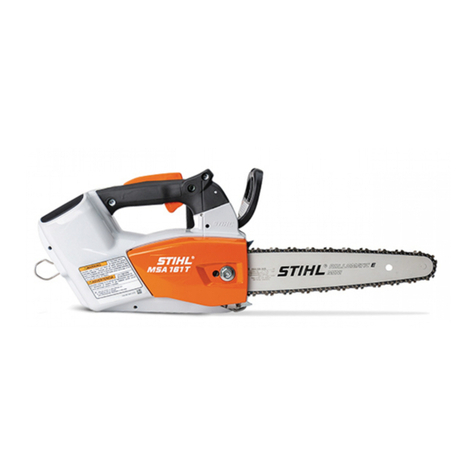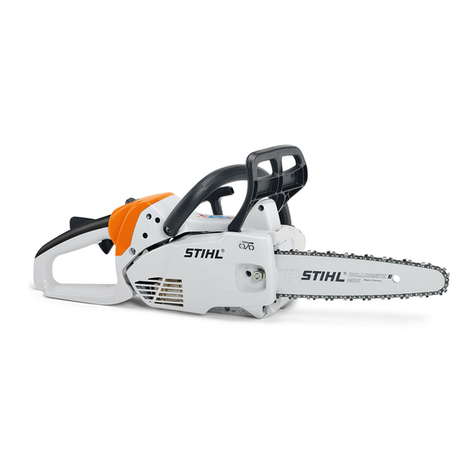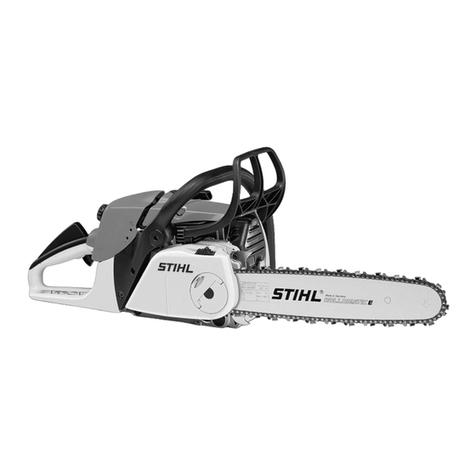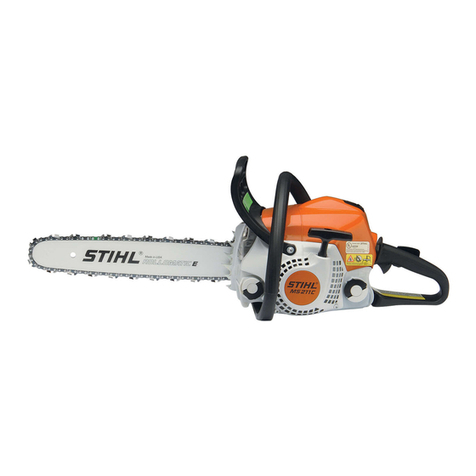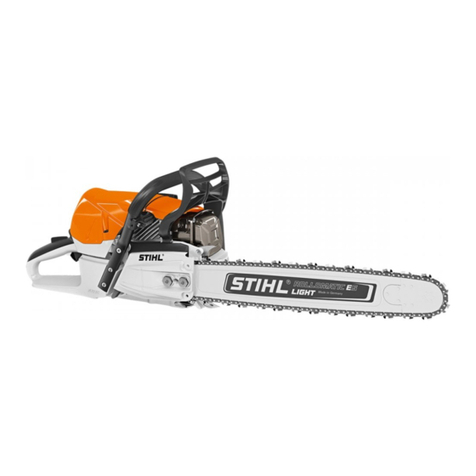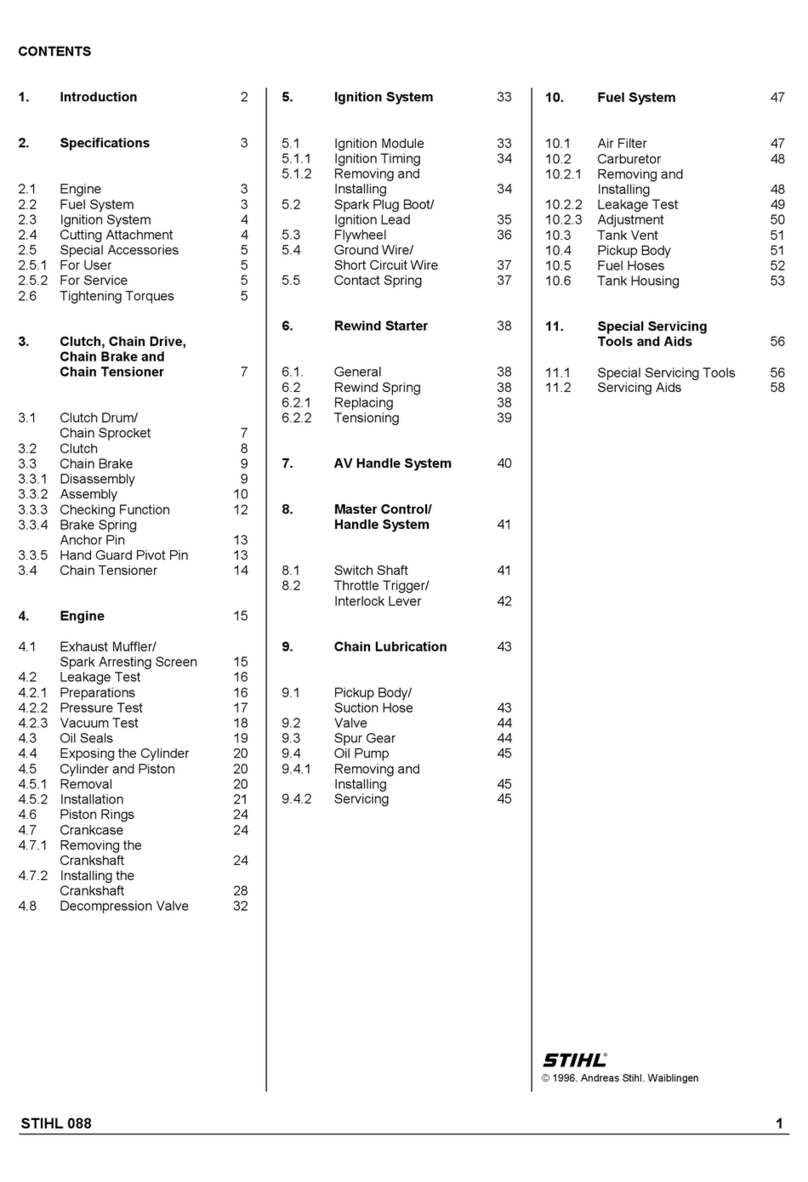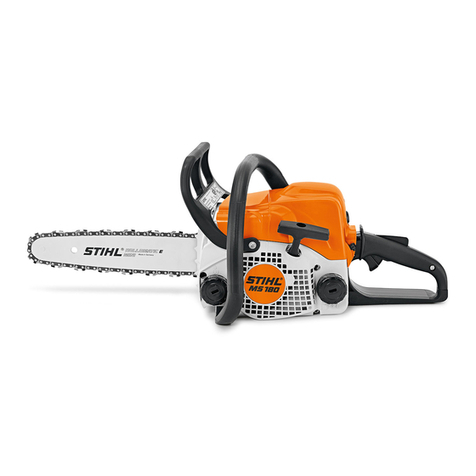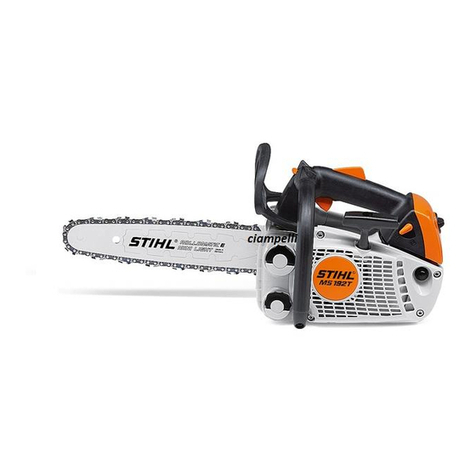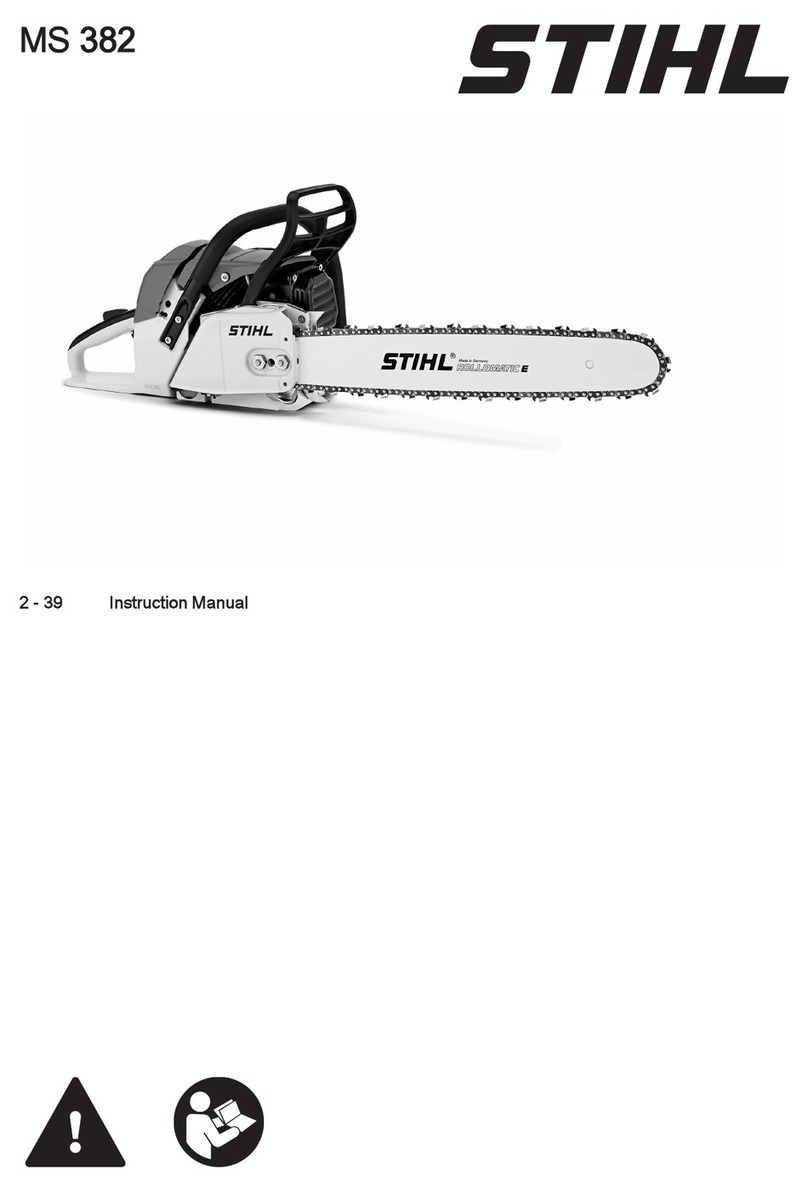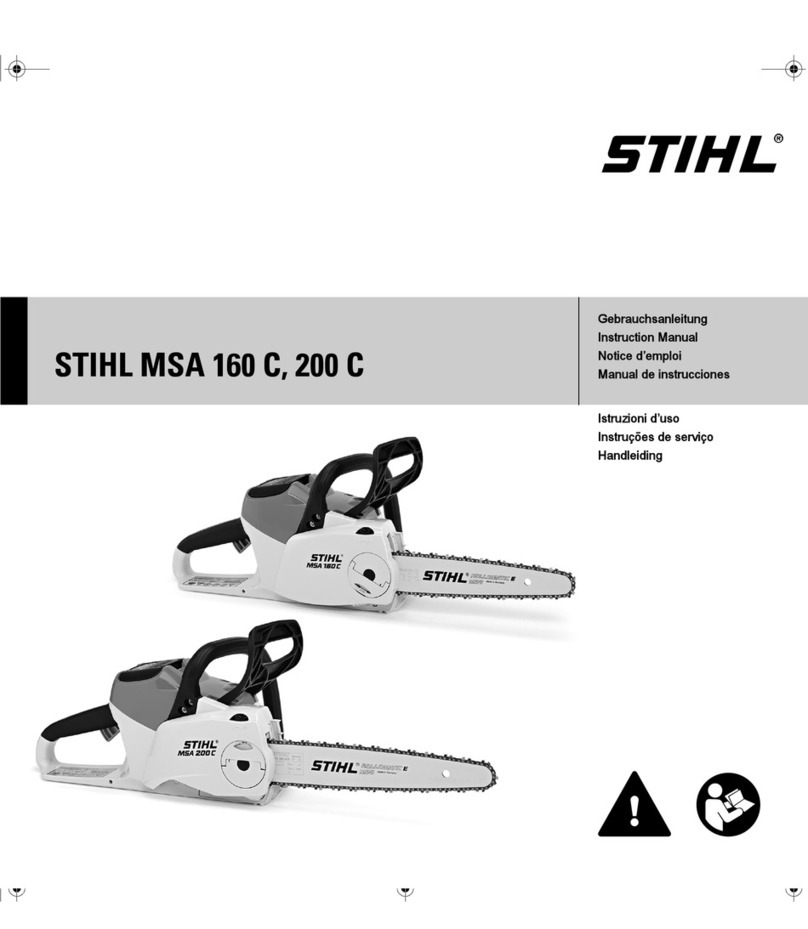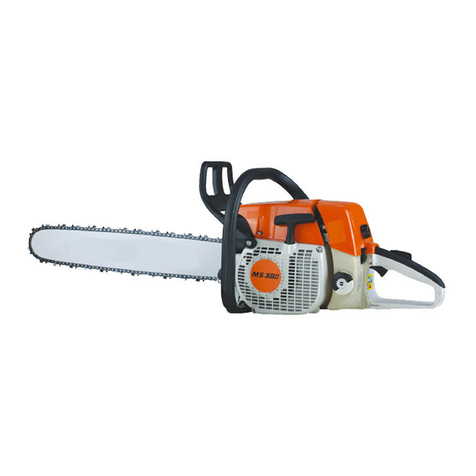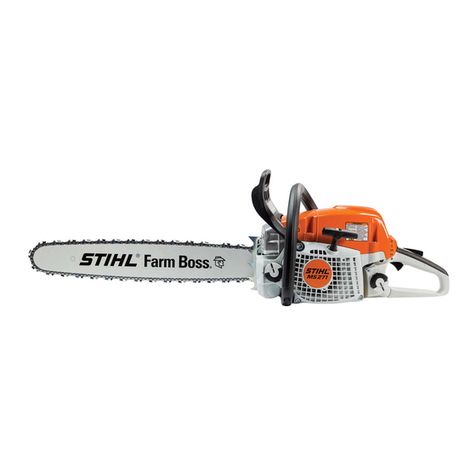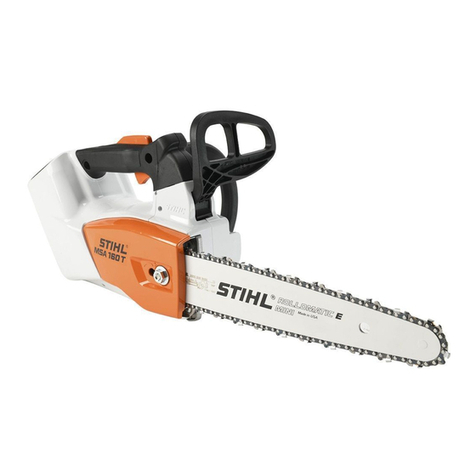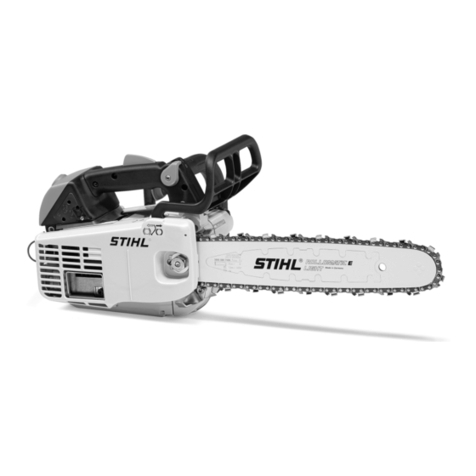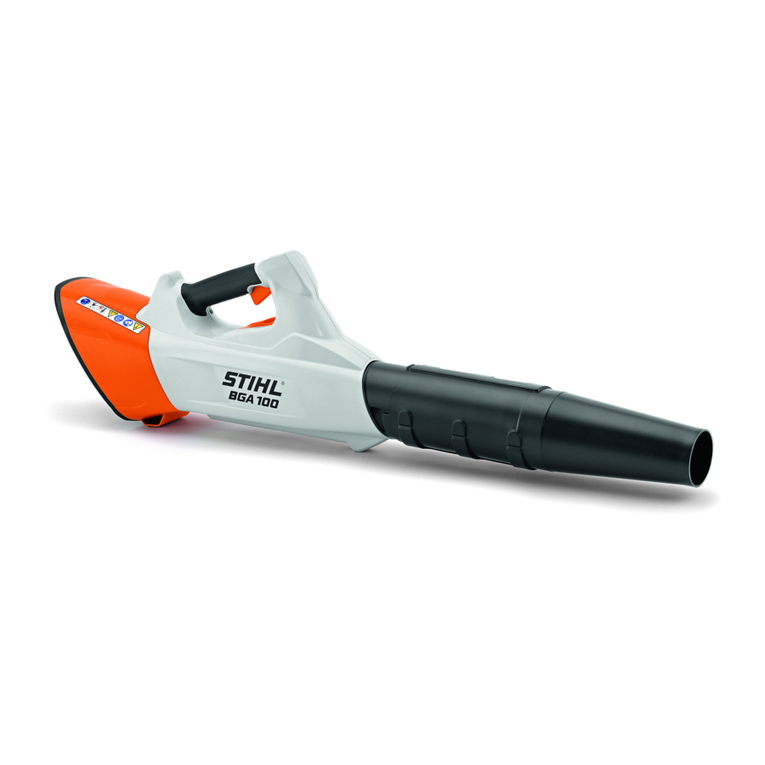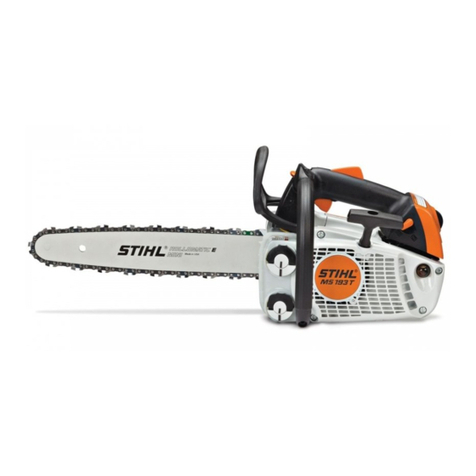
■ Fuel, gasoline or two-stroke engine oil can
cause irritation if they come into direct contact
with the skin or eyes.
►Avoid contact with fuel, gasoline and two-
stroke engine oil.
► In case of contact with the skin: Wash
affected areas with plenty of water and
soap.
►In case of contact with the eyes: Rinse eyes
with plenty of water for at least 15 minutes
and seek medical advice.
■The saw’s ignition system produces sparks.
Unconfined sparks may cause a fire or an
explosion in an easily combustible or explo‐
sive environment. This can result in serious or
fatal injuries and damage to property.
►Use the spark plugs described in this
instruction manual.
► Insert and tighten down the spark plug.
► Connect the spark plug boot and press it
down firmly.
■ The saw can be damaged if it is run on a fuel
mixture consisting of unsuitable gasoline or an
unsuitable two-stroke engine oil or if an incor‐
rect mix ratio of gasoline and two-stroke
engine oil is used.
►Mix the fuel as described in this instruction
manual.
■ The mixture of gasoline and two-stroke engine
oil can separate if it is stored for a long period.
The saw can be damaged if it is used with a
fuel mix that has separated.
►Before refueling the saw: Thoroughly mix
the fuel.
► Use a mixture of gasoline and two-stroke
engine oil that is not older than 30 days
(STIHL MotoMix: 2 years).
4.8 Working
4.8.1 Cutting
WARNING
■Always work within calling distance of others
in case help is needed.
► Make sure than persons outside the work
area are within calling distance.
■ If the engine is not started properly, the user
may lose control of the chainsaw. This can
result in serious injuries.
►Start the engine as described in this instruc‐
tion manual.
► If the saw chain is touching the ground or
objects: Do not start the engine.
■ The user cannot concentrate on the work in
certain situations. The user can lose control of
the saw, stumble or fall and be seriously
injured.
► Work calmly and carefully.
► If light and visibility are poor: Do not use
your saw.
► Operate the chainsaw alone.
► Do not work above shoulder height.
► Watch out for obstacles.
► If you begin to feel tired: Take a break.
■ When working in a tree there is risk of the saw
falling to the ground. This can result in serious
injuries and damage to property.
►Secure the chainsaw with a rope tied to the
ring.
■ Exhaust gas is produced when the engine is
running. Breathing in exhaust gas can have
toxic effects.
►Avoid inhaling exhaust gas.
► Operate the chainsaw is a well ventilated
location.
► In the event of nausea, headache, visual
disturbances, problems with hearing or diz‐
ziness: Stop work and seek medical advice.
■The user’s ability to hear and assess noises is
restricted when wearing hearing protection
with the engine running.
►Work calmly and carefully.
■ The user will not be able to control the chain‐
saw properly if it is operated with the Master
Control lever in position . This can result in
serious injuries.
►Check that the Master Control lever is in
position during operation.
► Start the engine as described in this instruc‐
tion manual.
■ Do not accelerate the engine with the chain
brake engaged since this can damage the
chain brake.
►Disengage the chain brake before you start
cutting.
■ The rotating saw chain can cut the operator.
This can result in serious injuries.
► Do not touch the rotating saw chain.
► If the saw chain is blocked by an object:
Shut off the engine and engage the chain
brake. Then remove the object causing the
blockage.
■The rotating chain becomes hot and expands.
If the chain is not lubricated sufficiently or not
re-tensioned at regular intervals, it may come
off the guide bar or break. This can result in
serious injuries and damage to property.
►Use special chain oil.
4 Safety Precautions English
0458-568-8321-B 7
